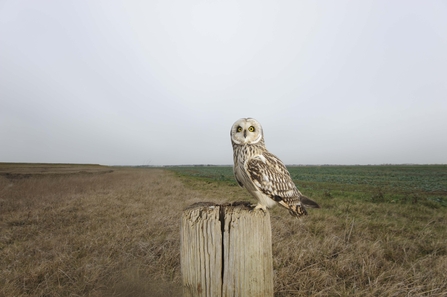The light breeze buffets smoke-grey clouds across the eggshell-blue sky, traipsing in their endless cycle of travel. The lush, verdant grasses begin to wither to buff, and banks of reed flutter their feathery tips.
But concealed in the long winter tussock is the king of camouflage - a short-eared owl. Its complex plumage incorporates ash-grey and chocolate brown, woven together into the perfect disguise. Set in coal-black sockets, a pair of icy lemon eyes drift about, intent on spotting prey. Suddenly the bird lifts up into the air. It floats effortlessly on the whispering wind. Twists, turns and banks over the meadow, its wings glint gold. The manoeuvrability, agility, majesty! I can't get over it. I just love them.
The short-eared owl is probably my favourite British bird. Not many people have seen one of these elusive nomads, which only occupy very specific areas. They like to breed on high moorlands in the north and west, but migrate down to Norfolk's marshes, dunes and heaths in the winter.
They are similar in shape to barn owls, but are considerably larger. The underwings and belly are creamy unmarked buff, whereas the upperside is marbled straw-brown. The prominent, round facial disk, used for amplifying sound, shows lemon-yellow eyes surrounded by black, which always give the bird a disgruntled look! Their wings span about a metre, making them our largest owl. They also frequently hunt in broad daylight, meaning they are easier to see than other owls.


